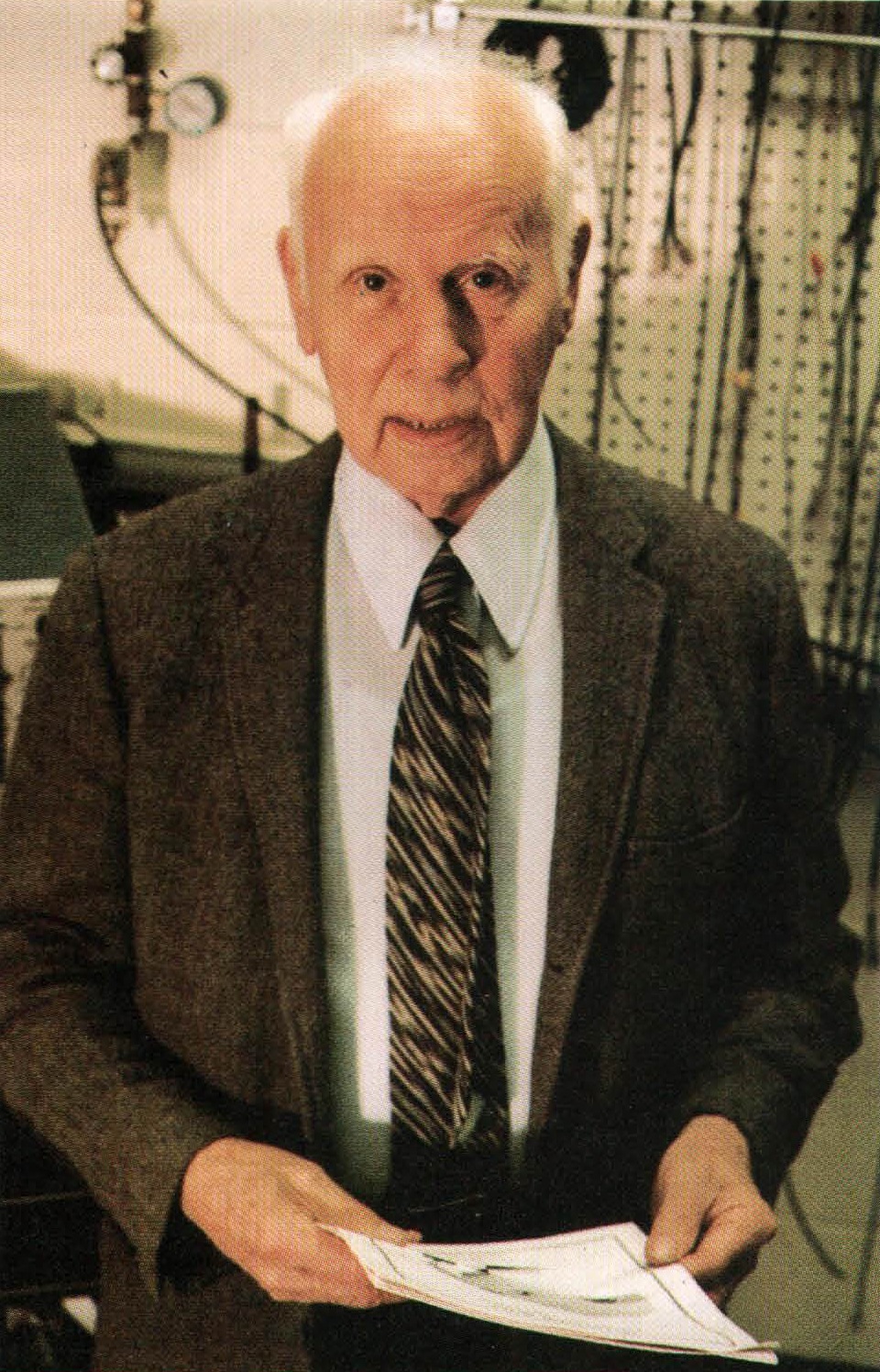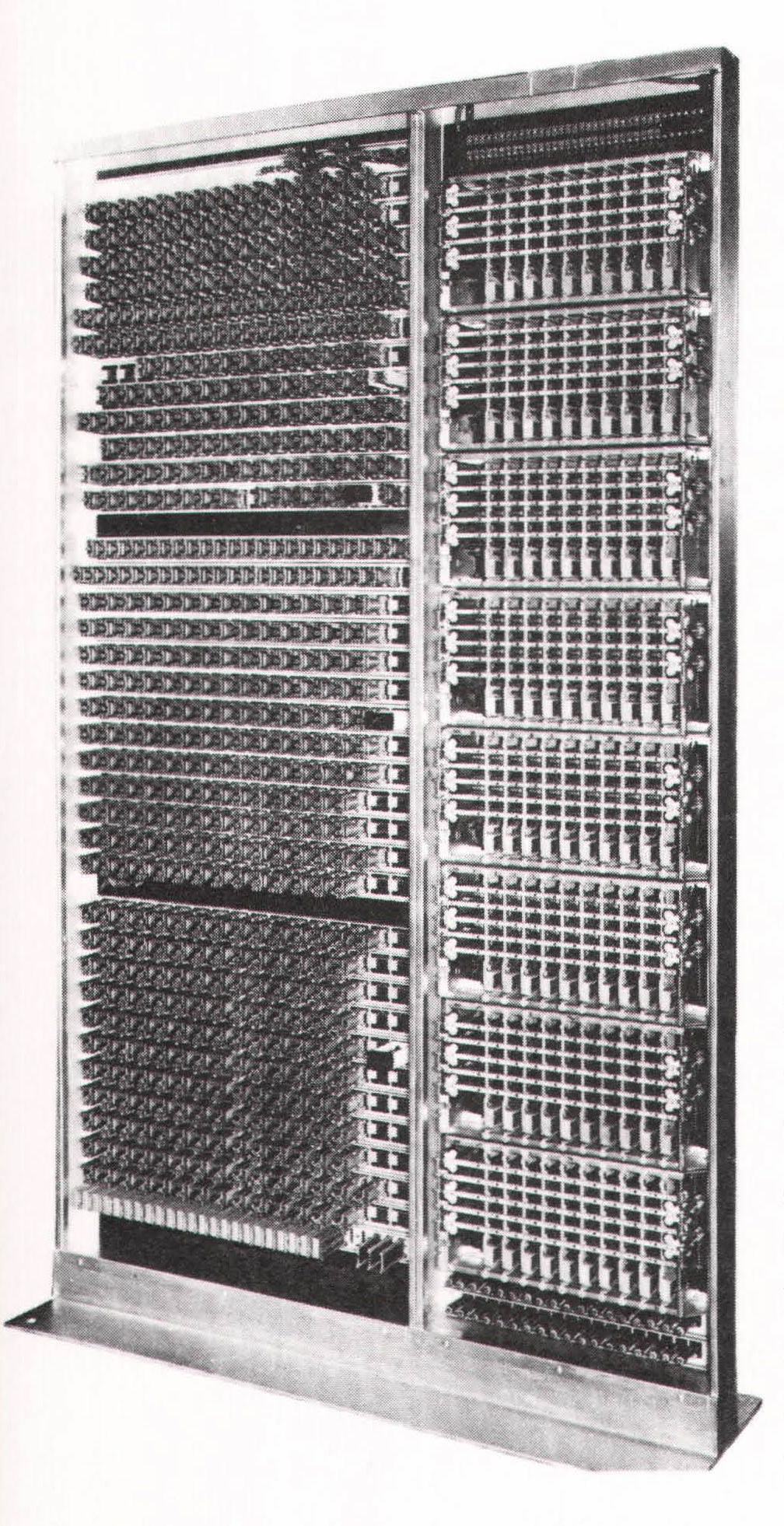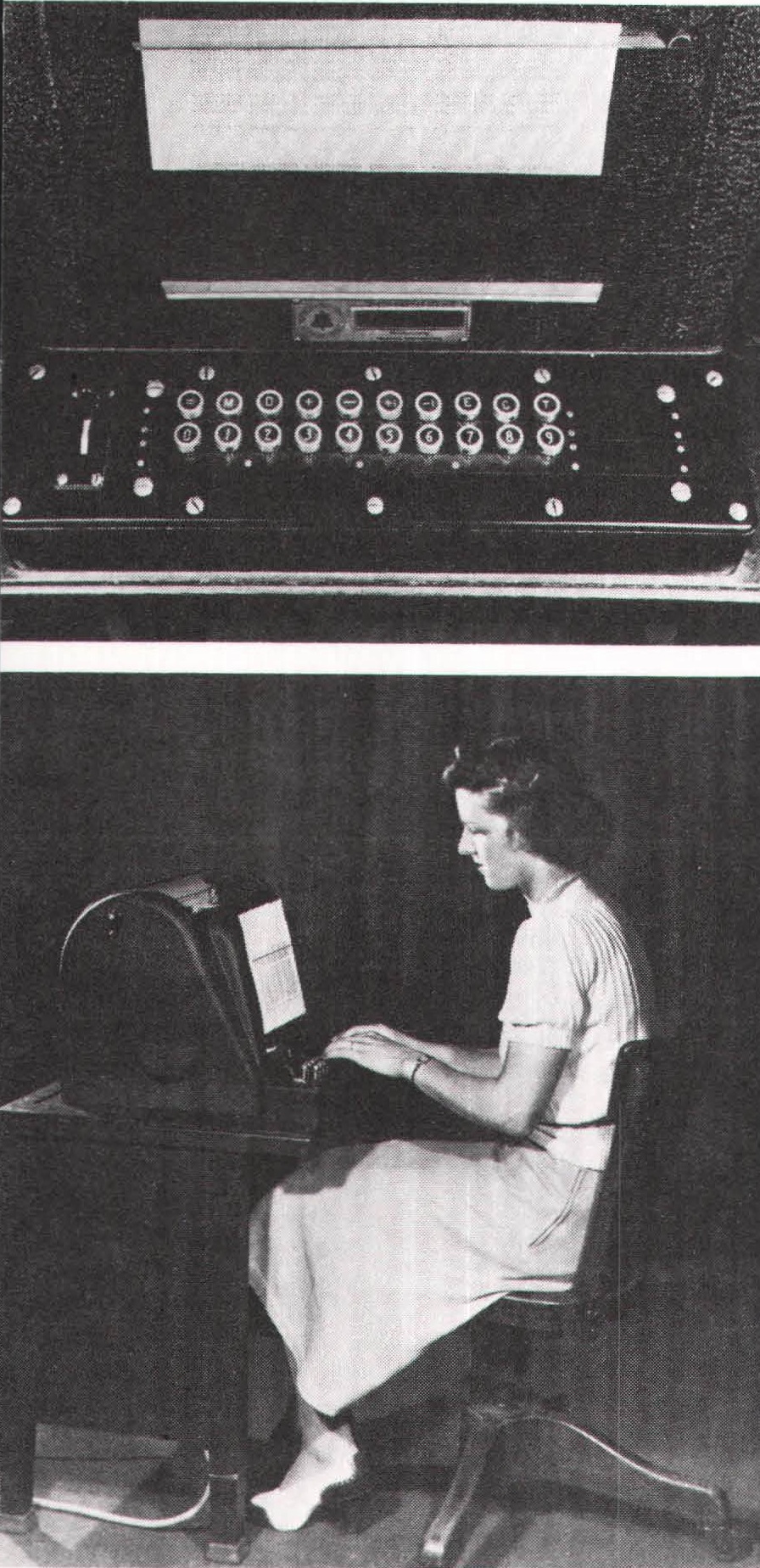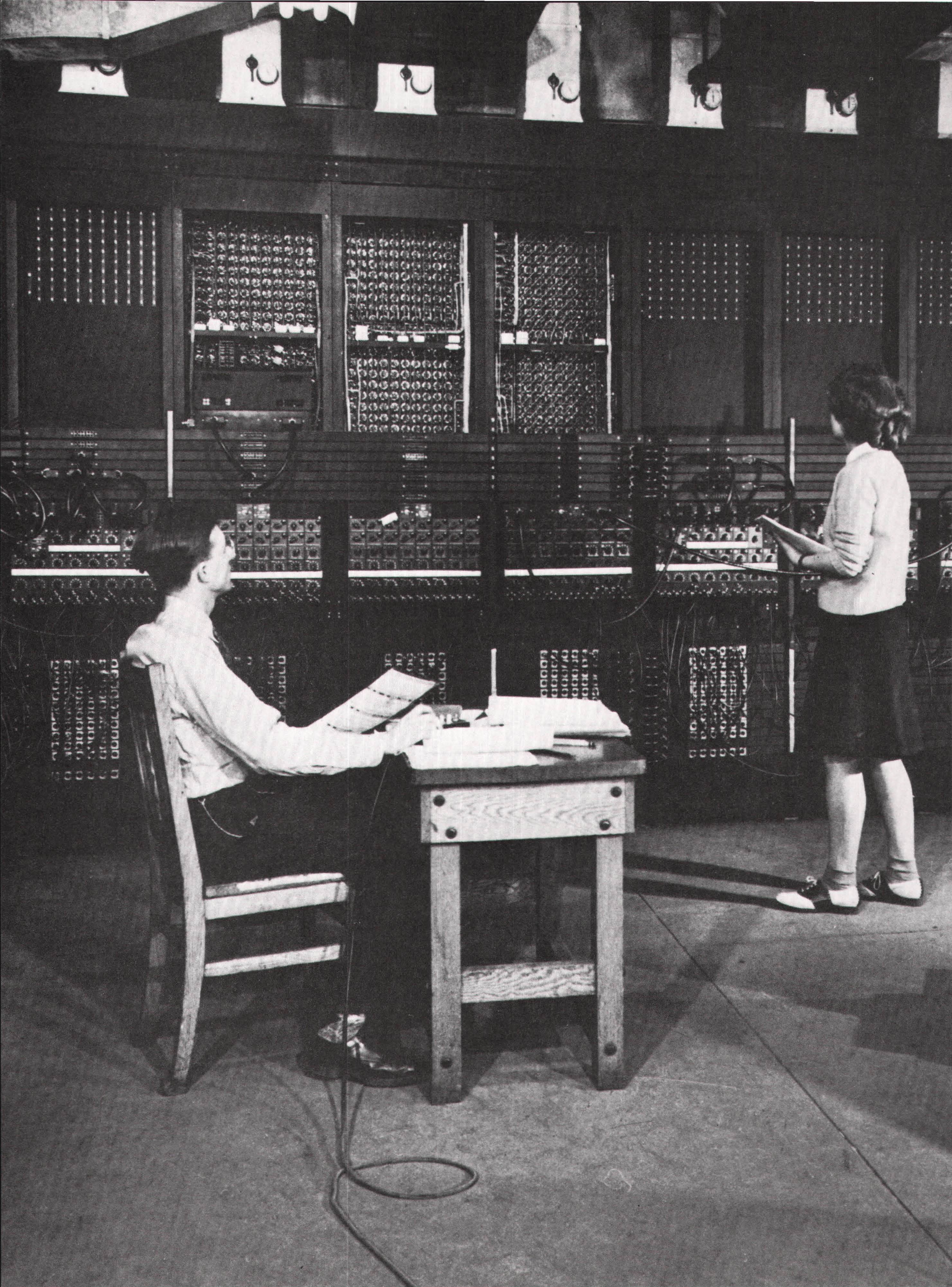I explained what was to be done and pushed the button for it to be done. One of the first things I did was to add 5,000 numbers together. Seems a bit silly, but I told the press, “I am now going to add 5,000 numbers together” and pushed the button. The ENIAC added 5,000 numbers together in one second. The problem was finished before most of the reporters had looked up! The main part of the demonstration was the trajectory. For this we chose a trajectory of a shell that took 30 seconds to go from the gun to its target. Remember that girls could compute this in three days, and the differential analyzer could do it in 30 minutes. The ENIAC calculated this 30-second trajectory in just 20 seconds, faster than the shell itself could fly!
Arthur W. Burks, Who Invented the General – Purpose Electronic Computer?
While Zuse, Schreyer, and friends were building their relay calculators, at least four other digital computer projects were underway in the United States, where the technological climate, not to mention political and financial conditions, was much more hospitable to experimentation. A totalitarian state like Nazi Germany may make important technical and scientific breakthroughs by marshaling men and materiel by fiat, and Zuse certainly accomplished a great deal on a shoestring budget and in the middle of a war, but the kind of sustained, concentrated development that was necessary for the invention of a large-scale electronic general-purpose digital computer depended upon the free intercourse of men, ideas, and capital.

The first of the American computing projects began in the fall of 1937, when George Stibitz, a young physicist at Bell Telephone Laboratories, then located in New York City, took a few telephone relays home “to start what I thought of as a play project.” The son of a theology professor at a small college in Dayton, Ohio, Stibitz had shown an early talent for science and engineering, which led his parents to enroll him in an experimental high school that had been set up by a wealthy inventor with his own ideas about education. Stibitz attended Denison University, a small liberal arts college in Granville, Ohio, and Cornell University, where he earned a doctorate in mathematical physics.
At Bell, Stibitz was a member of a group of mathematicians who designed relay switching equipment – the same kind of on/off electromechanical switches that Zuse employed in his calculators. Bell scientists had long been aware of the similarity between the action of these humble devices and the zeros and ones of binary math, but it had never occurred to them that relays could also be used to perform symbolic logic – until the inquisitive Stibitz came along. “I had observed,” Stibitz recalled thirty years later, “the similarity between the circuit paths through relays and the binary notation for numbers and had an idea I wanted to work out….
That weekend I fastened two of the relays to a board, cut strips from a tobacco can and nailed them to the board for input; bought a dry cell and a few flashlight bulbs for output, and wired up a binary adder. I wired the relays to give the binary digits of the sum of two one-digit binary numbers, which were entered into the arithmetic unit by pressing switches ma de of the metal strips. The two-flashlight-bulb output lighted up to indicate a binary 1 and remained dark for binary 0.
I took my model into the labs to show to some of the boys, and we were all more amused than impressed with some visions of a binary computer industry. I have no head for history. I did not know I was picking up where Charles Babbage in England ha d to quit over a hundred years before. Nor did it occur to me that my work would turn out to be part of the beginning of what we now know as the computer age. So, unfortunately, there were no fireworks, no champagne.

Having built an adder, Stibitz designed more sophisticated circuits that could subtract, multiply, and divide. Although his work was quite original and, unlike most “play projects,” actually resulted in the construction of something useful, Stibitz wasn’t the only American who noticed the correspondence between ordinary relays, binary math, and symbolic logic.
In 1938, Claude E. Shannon, a student of Bush’s at MIT, published a groundbreaking paper on the application of symbolic logic to relay circuits. Shannon had a part-time job tending the differential analyzer, which contained some relays, and Bush, who had a knack for inspiring his students and colleagues, suggested that a study of the logical organization of these circuits might make a fruitful subject for a thesis. Shannon’s thesis not only helped transform circuit design from an art into a science, but its underlying message – that information can be treated like any other quantity and be subjected to the manipulation of a machine – had a profound effect on the first generation of computer pioneers. However, Stibitz had already worked out most of the circuits for a relay calculator by the time Shannon’s paper appeared.
Incidentally, Shannon, whose master’s thesis was one of the most influential ever written, joined Bell Labs after graduating from MIT, where he went on to do seminal work in the esoteric discipline of information theory.
A few months after Stibitz built the “kitchen adder,” his boss at Bell Labs, Dr. T. C. Fry, asked him whether he could design a relay calculator for complex arithmetic. There was a group at Bell that designed noise filters and amplifying circuits for long distance telephone lines, work that required the solution of innumerable algebraic equations with complex numbers. (A complex number is a mathematical expression written as the sum of two real numbers, one of which is multiplied by the square root of – 1). In the late 1930s, when the Bell System was busy designing coast-to-coast phone lines, the organization employed a small team of women computers who, using ordinary desk calculators, solved the complex algebraic equations produced by the filter and amplifier design group.
Needless to say, the computational process left much to be desired and Bell Labs was willing to try another approach. So Fry introduced Stibitz to a consummate switching engineer named Samuel B. Williams, and Stibitz and Williams designed a “complex number calculator.” Lab officials gave the go-ahead, and the Model I, as the machine came to be called, was constructed between April and October 1939 at a cost of about $20,000.

It consisted of two units: a panel containing about 400 to 450 relays, which performed the computations, and a teletype, outfitted with a special keyboard, which was used to enter mathematical problems and to record the answers. It could add two eight-digit decimal numbers in a tenth of a second and multiply two equally large numbers in about a minute. While the Model I wasn’t very fast at multiplication or division – a skilled human computer with an electromechanical desk calculator could equal if not outpace it – the machine was highly reliable and very easy to use. Moreover, you didn’t have to be in the same room to operate it; since the teletype was connected to the panel by cable, you could use the Model I from any point in the phone system. In September 1940, Bell Labs installed a few teletypes at Dartmouth College in Hanover, New Hampshire, for the annual meeting of the American Mathematical Society, linking them through the phone lines to the Model I in Manhattan. The machine operated flawlessly and everyone was quite impressed.

Although the Model I was a useful and impressive achievement, it wasn’t a very sophisticated machine. Certainly, Zuse had accomplished much more with much less. In the first place, the Model I was not programmable, which meant, of course, that it couldn’t execute conditional jumps; you typed in an equation and the machine printed out an answer. In the second, it was not a general-purpose calculator; it was permanently wired, or hardwired, in the jargon of electronics, to perform a given set of operations and couldn’t do anything else. In the third, it did not have a memory, a central processing unit, or a clearly defined control unit. Lastly, it could be used by only one person at a time, despite its capacity for remote, or long-distance, computing.
Since Bell Labs wasn’t in the calculator business, its interest in the Model I faded away. With the coming of World War II, however, the Labs devoted its considerable resources to the war effort, and Stibitz and Williams designed four program-controlled relay calculators for the military. Three of these machines were devoted to special chores (for instance, the Model II helped test the accuracy of a gun director), but the Model V, completed in 1946, was a general-purpose calculator in the same league as the Z4. It was, conceptually and structurally, a fairly advanced machine. Programmed by paper tape, it contained a small memory, a central processor, and a control unit. The Model V, which cost $500,000 – twenty-five times the price of the Model I – provided yeoman mathematical service for more than a decade. Yet it was a technological dead letter from the moment it appeared, outmoded by the electronic digital computer.
Back to Chapter Three Continue
